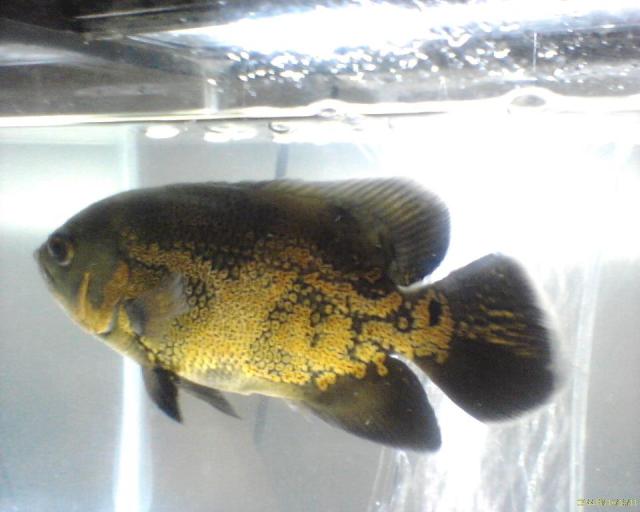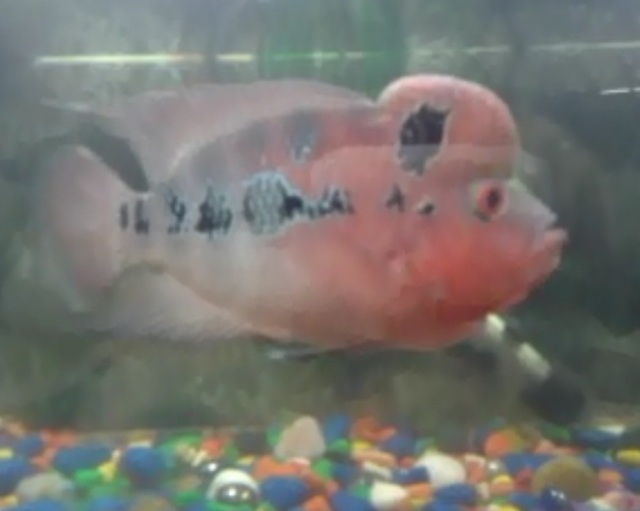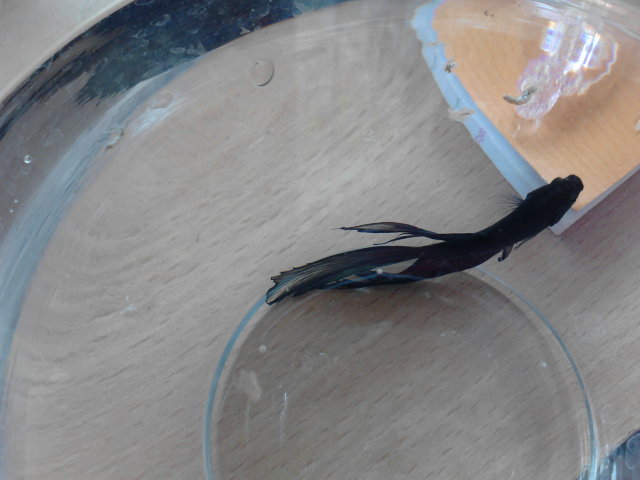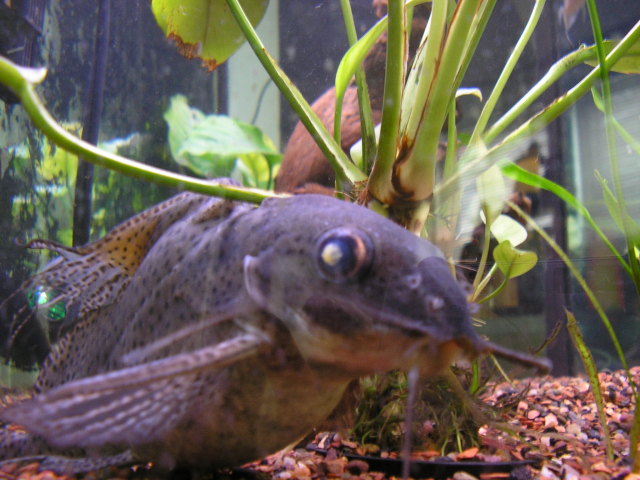QuestionI have set up a new 33 gallon tank, the filters have been running for aprrox. two and a half weeks, I introduced 11 neon tatras and two silver/bala sharks on Sunday the 20th of March. I've been testing water quality since the setup, and the pH has been steady at 7.0, the ammonia was 1.0 until today it's tested at 2.0, the nitrite was 0, now .25, and the nitrate has maintained a steady 0ppm. My question is how do i safely adjust the ammonia and nitrite levels?I heard that even when treating the ammonia levels, it still may test positive for ammonia, how is one to be sure it is really ridding itself of it?please reply quickly as i am very concerned, and want my fish healthy and happy, thank you so much:)
AnswerHi Camilla;
Make a 25% water change today and keep doing them 2 or 3 times a week to keep the ammonia under control and avoid fish death. You really have too many starter fish in there though. You should have a maximum of one inch of fish per 10 gallons for the first 6 to 8 weeks. For your tank you should only have 3 inches right now. Too many fish will cause the ammonia and then the nitrites to rise too high for the fish to be safe. Even with water changes they could get sick and possibly die. I will include my article on new tanks at the end of this letter for you to know more about it.
You really should know that bala sharks get 12 inches long and will start eating your neons as they grow. They're just too big a species for your tank. Since you know now that the tank has too many starter fish anyway, the balas might be better off going back to the fish store. That way they have a chance to go to someone who has a 100 gallon tank or larger where they can thrive and grow to their full potential. If the store won't take them back willingly, leave them in the bag on the counter, walk away and find a new store. If they sold these fish to you knowing the size tank you have they should have known better or at least informed you of their future size. They don't deserve your business if they didn't tell you the truth.
**********
New Tank Syndrome or Break-in Period
So you have a new tank and you filled it up, put the filter together, mounted the heater into place and turned on the lights. You have all the plants and decorations where you want them....
You are ready for fish.
But, your filter is not ready for a full tank of fish yet.
The filter is running and moving the water and cleaning out crud, right? Of course!
But a very important part of your filter is the part you can't see. An aquarium filter removes the larger visible stuff, but it also must remove the dissolved fish waste that turns into ammonia in the water. To do this, special bacteria must grow in the filter system and on the particles of gravel in the bottom of your tank. This process occurs even on a limited scale in little fish bowls that have no filter in them.
This is "New-Tank Syndrome" or the "Break-in Period". The entire process takes 6 to 8 weeks to complete because these "nitrifying" bacteria grow quite slowly.
Start off with only one or two hardy fish (no more than 2 total inches of fish) for every ten gallons of water and don't add more until the 6 to 8 weeks has gone by. Hard to be patient, but it is worth it to keep your fish alive and healthy. As a matter of fact, the bacteria cannot develop without fish in the tank. You can let that tank sit forever without fish in it, but as soon as the first fish goes in the process begins. Avoid changing the filter pads during break-in. This removes the bacterial colonies that are essential to a balanced aquarium. You can rinse the filter pad out in a container of aquarium water. This will preserve most of the bacteria colonies while still allowing your filter to flow freely. Even using bacteria additives and water conditioners when you first set up the tank will not make a tank begin the cycle by itself. If there are no fish to provide food (fish waste) for the bacteria, the beneficial bacteria cultures will die and you will have to start the colonies all over again once fish are added to the tank. Once the tank has completed the initial cycle, you can change the filter pads every 4 weeks or so. But for now, just rinse them.
Feed your new fish VERY lightly. Any excess food will cause additional waste your system cannot afford to have right now. If you see food floating around or lying on the plants and gravel after five minutes, too much food is going into the tank. Cut back a little each time you feed until it is ALL gone 5 minutes after you feed them. Feed them once a day.
During this "break-in period" your tank will become cloudy and milky looking. You may have to tolerate this for the entire break-in period but it is only temporary. Changing 25% of the water three times a week until the break-in period is over helps a great deal. Changing water reduces the ammonia and nitrites that rise while the bacteria continues to multiply. If ammonia and/or nitrites become too high, your fish will become stressed and possibly die. Use a good water conditioner when you replace the water and make sure it is the right temperature to avoid shocking your fish.
When the break-in is over after 6 to 8 weeks and there are no nitrites or ammonia present in the water you can slowly add more fish. Add one or two every week until you reach the desired population. This allows the bacteria to adjust to the new population every time before adding more. Monitor the nitrites and ammonia to be sure they don't come up. If they do, make a 25% water change and check them again. Don't add the next fish until the levels are down again.
The safe maximum population for any size tank is one inch of adult fish for every gallon of water in the tank. Do some research to be sure of the fish you are interested in. Even though they are small when you buy them, you have to base your population calculations on full-sized adult fish. Many hobbyists have up to two inches per gallon but this can be risky. If a water quality issue arises or a disease occurs it will spread fast and furious in an over-populated tank. In any case, 25% water changes every week to two weeks are absolutely essential for the health of your fish.
Following these guidelines will help you get your new tank on the right track.
**********
At Your Service;
Chris Robbins
Come on over and join us on the freshwater fish forum at About.com to get even more information too;
http://freshaquarium.about.com/od/questionsanswers/a/naavigateforum.htm

 Need advice for optimal treatment of my tiger oscar Odie :)
QuestionQUESTION: Hi Jaymie my name is Melissa and my O
Need advice for optimal treatment of my tiger oscar Odie :)
QuestionQUESTION: Hi Jaymie my name is Melissa and my O
 Need Information about Flowerhorn
Question
Flowerhorn
Dear Sir,
Iam Prakash from
Need Information about Flowerhorn
Question
Flowerhorn
Dear Sir,
Iam Prakash from
 hand feeding fish
QuestionSpottie
QUESTION: Hi! Im really interest
hand feeding fish
QuestionSpottie
QUESTION: Hi! Im really interest
 Beta Fish- dull, flits about the tank, lost appetite
QuestionBlue Beta
QUESTION: Hi Jaymie,
I read
Beta Fish- dull, flits about the tank, lost appetite
QuestionBlue Beta
QUESTION: Hi Jaymie,
I read
 eye problem in black lace cat fish
QuestionQUESTION: This fish has what looks like yellowi
eye problem in black lace cat fish
QuestionQUESTION: This fish has what looks like yellowi